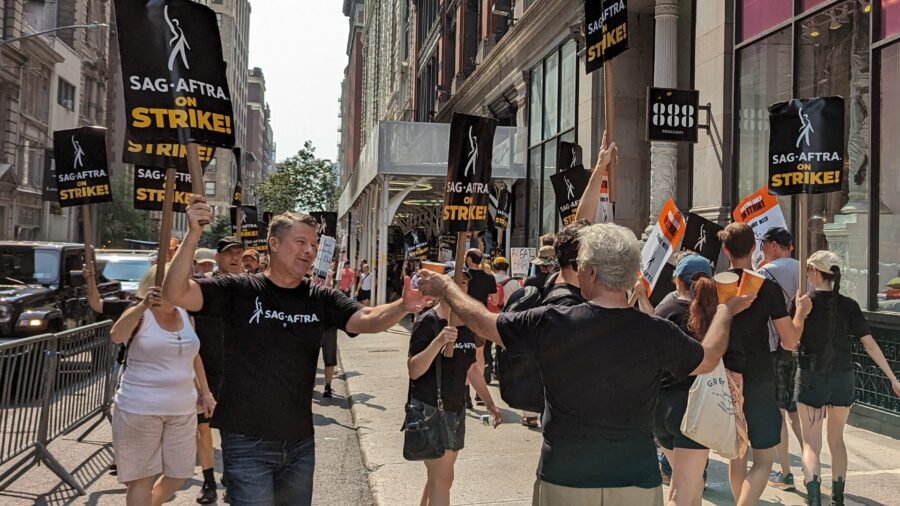Actors Strike Hits Crucial Deadline, Solution Won’t Happen Until 2024?

Despite surpassing 100 consecutive days, the ongoing strike by the Screen Actors Guild‐American Federation of Television and Radio Artists (SAG-AFTRA) has nonetheless reached a critical juncture. According to TheWrap, Hollywood studios are thankfully extending negotiations, but there’s a catch: talks can only continue for one more week. Should the disputing parties fail to reach an agreement within this timeframe, Tinsel Town will halt negotations until 2024.
Such an eventuality would undoubtedly and profoundly impact the fall television season and movie releases slated for next summer.
According to a new report, if SAG-AFTRA and the AMPTP don’t reach an agreement by the end of next week, negotiations will end until January 2024.
The SAG-AFTRA dispute, usually referred to as the actors strike, has roared on since July 14, spurred by a push on behalf of the actors union for better compensation and terms, particularly from streaming services. The union claims that streamers like Netflix reel in the revenue but pay much less than they should to the talent behind the shows we love.
A recent contentious factor in these negotiations has been a proposal by SAG-AFTRA for a #1-per-subcription fee from streaming divisions, which would be icing atop the proverbial cake of other negotiated raises and benefits. For their part, the studios see this subscription fee as beyond the pale. All of which motivated the prolonged impasse in negotiations.
The actors strike has been, in the truest sense of the word, disputatious. Two weeks ago, prominent studio executives, represented by the Alliance of Motion Picture and Television Producers (AMPTP), briefly stormed away from the negotiating table over the subscription fee. When they sat back down, their counter-offer only eventuated further delays, if only because the union needed crucial time to review the proposal.
Included in the many productions impacted by the Actors Strike is Paddington in Peru, whose cast recently lost Rachel Zegler because of her standing in solidarity with SAG-AFTRA.

But the real, beating heart of the actors strike is the way actors should be compensated in the rapidly evolving landscape of streaming content. SAG-AFTRA’S proposal, which averages out to nearly 57 cents per streaming subscriber, aims to compensate performers whose work features on streaming sites more fairly.
As the deadline looms, no one can forecast the strike’s next chapter, but the outcome of these discussions will still hugely shape Hollywood’s future.
The AMPTTP, on the other hand, maintains unwaveringly that the fee is actually one dollar per subscription and prefers a viewership bonus model. The latter option resembles their agreement with the Writers Guild of America (WGA) not long ago.
Meanwhile, the pressure characterizing the dispute only intensifies. The negotiations—and, of course, the actors strike itself—involve huge names: Disney’s Bob Iger, Netflix’s Ted Sarandos, Warner Bros. Discovery’s David Zaslav, and NBCUniversal’s Donna Langley, on the Studio’s side. All of whom are opposed by SAG-AFTRA President Fran Drescher and chief negotiator Duncan Cabtree-Ireland, who are not backing down.
As the deadline looms, no one can forecast the strike’s next chapter, but the outcome of these discussions will still hugely shape Hollywood’s future. Additionally, the entire direction of both digital content creation and actor compensation are at stake.
It’s important to remember that the deadlock in the actors strike affects the broader ecosystem of production crews, support staff, and the global audience anticipating new content, in addition to the actors and studios. The studios’ projection for future projects—that anything delayed past November would be unlikely to start production until next year—represents a potentially enormous gap in new entertainment offerings.
Both the strike and surrounding negotiations underscore the shifting dynamics in entertainment media, where outdated modes of production, distribution, and compensation must be reevaluated and reimaged in the wake of streaming’s ascendancy.












